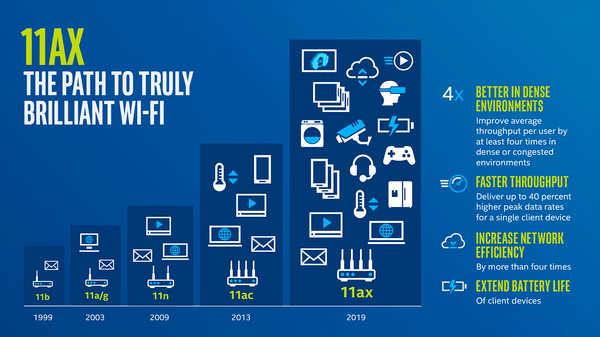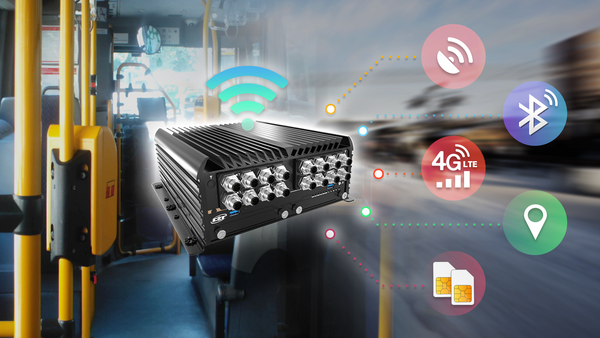
Industry 4.0 and the demand for latency-free processing power in increasingly difficult physical settings have increased the need for robust connectivity features on rugged edge computers. Devices purpose-built for challenging deployments in remote, mobile or volatile environments must reliably communicate with connected devices, outside networks and cloud resources wirelessly where hardwired transmissions are infeasible or impractical.
Developments in wireless technologies are bringing increased flexibility to distributed IoT/IIoT deployments, with improvements that bring their utility to the level of traditional, trusted wired systems. Technologies have widely varying levels of coverage, energy efficiency and data rates determining their suitability for myriad applications. The following are three leading technologies helping untangle rugged edge deployments.
Three Proven Technologies Helping Untangle Rugged Edge Deployments
1. Cellular Connectivity
Cellular connectivity includes 4G (and earlier generations), LTE and the blossoming 5G technologies to deliver high-speed, far-reaching communications for mobile telephony and IoT applications. Using subscriber identity modules (SIMs), devices with cellular technology have the freest range of all IoT deployments. Cellular devices are integrated with a modem communicating via a low-level protocol like SPI or UART. Traditionally, they are ideal for remote and fleet communications due to their flexible roaming connectivity capabilities.
The reigning 4G wireless broadband carries data speeds potentially ten times faster than those of 3G at 12 Mbps for mobile deployments and 1 Gbit/s for static usage. 5G, however, has average speeds comparable to those of modern cabled Internet at 1 Gbit/s. Projections show 5G eventually bring a sweeping latency reduction over 4G with an anticipated ceiling anywhere between 10 Gbit/s and 100 Gbit/s — 1.8 Gbit/s already observed. Developments in cellular technology, including establishing low-power wide-area networks (LPWAN), bring new flexibilities to edge and IoT deployments.

Image Source: speedtest.net
5G enables fine network splicing, giving technology users greater connection flexibility according to use case and enterprise business model. Data collection applications do not have the same network availability and latency demands as critical autonomous vehicles or time-sensitive industrial functions. Usually this would require often prohibitive construction of dedicated networks for individual application segments. Slicing enables a more scalable IoT deployment, furthered by 5G’s ability to support a million devices per square kilometer — tenfold 4G’s already generous capacity.
Cellular provides the greatest performance benefits for in-vehicle applications, and widely distributed or remote deployments. It is ideal for communicating with cloud resources for highly responsive, data-intensive applications, like remote video surveillance, vehicle telematics and intensive processing. Cloud reliability reduces hardware demands and local the need for internal memory, processors and software applications.
5G’s scalability will fuel the development of use cases requiring high concentrations of data nodes like autonomous vehicles and smart cities. Cellular, however, has drawbacks that currently preclude its universal usage for IoT. Foremost is cost. Cellular services generally charge for data transfers on a per bit basis, which can factor into the cost of relying on cloud resources for processing and storing data. Also, with faster service comes greater challenges to signal reliability. 5G’s speedier millimeter-wave frequency transmission is more susceptible to physical obstacles like buildings, trees and unfavorable weather blocking signals. Cellular devices not leveraging LPWAN, while comparable with Wi-Fi, consume considerably more power than Bluetooth networks.
2. Wi-Fi
Wi-Fi is the trademarked wireless LAN technology that has served as the workhorse for the IoT. Like 5G, Wi-Fi is instrumental in delivering ultra-reliable low-latency communications (URLLC). Wi-Fi offers high speeds, great range, rich features set and exhaustive level of deployment control. Wi-Fi supports an expanded family of connectivity standards, working well with dedicated industrial protocols and even other communications like cellular and Bluetooth. Wi-Fi offers configuration flexibility to adjust range and power consumption according to deployment needs.
Of the communication options discussed in this blog, Wi-Fi currently delivers performance closest to hardwired connections in terms of latency and bandwidths. Wi-Fi 6 (IEEE 802.11ax) builds on this performance prowess and has additional connectivity value as it was developed for the fully-realized IoT. For starters, Wi-Fi 6 can deliver potentially 40 percent greater speeds than Wi-Fi 5 (IEEE 802.11ac). Wi-Fi 6 also provides dual-band agility, operating in the 2.4GHz and 5GHZ bands. The lower band is leveraged for communications over longer distances while 5 GHz delivers greater speeds in unobstructed settings, allowing devices to communicate optimally in a variety of conditions.

Image Source: intel.com
Wi-Fi’s deep configurability lets technology users customize performance and settings to best optimize their connected systems. It permits granular assignment of data rates, speeds and limits, as well as access permissions per connected device. It also enhances the visibility of edge devices, letting strong security measures be implemented in traditionally precarious deployments of vulnerable headless IoT devices. Wi-Fi networks allow a finer handling of security issues per connected device to ensure continuous network uptime while promptly removing a potentially compromised component to prevent infecting others. Furthermore, Wi-Fi Protected Access (WPA) allows password-encrypted communications with network devices to prevent cyber intrusion into connected systems and data.
Wi-Fi’s agility makes it ideal for many rugged IoT use cases. Any distributed network that is within range of a Wi-Fi router can be successfully deployed to quickly, safely and reliably transmit data. Edge surveillance systems, for example, rely on low-latency wireless connections to relay visual data to monitoring centers, cloud resources or other networks while making the best use of available bandwidth and resources to deliver efficient security and safety. Its deep configurability, however, adds considerable time and effort to device deployments. Wi-Fi systems are far more involved to implement than cellular and Bluetooth. Wi-Fi does tend to be less costly to operate than cellular since there is no continual data charge. Though Wi-Fi, like cellular, requires more power to function than Bluetooth.
3. Bluetooth
Bluetooth is a lightweight technology with quick, simple connectivity for low-power devices. The rise of Bluetooth has been in lockstep with the expansion of the IoT as manufacturers developed technology optimized for market cost, size and battery life. While cellular and Wi-Fi are meant to deliver for range and speed, Bluetooth offers one-to-one or many-to-many connectivity in situations where these transmission benchmarks are not chief concerns.
Bluetooth technologies are made up of several protocols unified under a single specification set by the Bluetooth Special Interest Group (SIG). The specifications ensure Bluetooth devices are universally connectable with each other regardless of deployment setting. The pairing is accomplished many times with the push of a button, enabling a speedy local IoT setup.
For a lightweight technology, Bluetooth is remarkably reliable and rapidly scalable. Bluetooth devices can form piconets consisting of a “master” device that commands up to seven “slaves.” Two or more piconets can be joined via devices that serve as a slave in one piconet and a master in another to form a wider scatternet. Bluetooth 5 can also operate on a self-healing mesh network retaining network performance in the event of individual device failure. The decentralized mesh networks can incorporate around 32,000 interconnected Bluetooth devices.
Bluetooth communicates weak 1-milliwatt data packet signals over the busy 2.4 Ghz industrial, scientific and medical (ISM) radio frequency band. Devices avoid interference, however, through adaptive frequency-hopping (AFH), which sniffs out and bypasses channels where other wireless devices would conflict with transmission 1,600 times per second. Forward Error Correction (FEC) algorithms detect and repair corrupted data for reliable transmissions.
Bluetooth networks fall behind cellular and Wi-Fi in speed, range and security. However, these limitations are mitigated by the unique conditions in industrial spaces, and Bluetooth’s limber deployment and low power consumption are indispensable assets to Industry 4.0 implementations. In Smart manufacturing facilities, connected equipment often does not require bandwidth to accommodate large data loads or range extending beyond the industrial space. Equipment usually needs to transmit short bursts of data and signals to other equipment, or back to industrial PCs and edge computers for processing and collection. Bluetooth’s resistance to interference suits “noisy” industrial spaces, where equipment operation frequency emissions and thousands of devices and sensors communicating data need to be negotiated. Bluetooth provides some device and signal security that is lighter than other technologies, but the device’s short range and placement in controlled facility spaces removes the threat of remote cyber attack.
So, Which Technology Dominates?
As with most technology introductions, the best choice is whichever is determined right for the intended use case. While each of the solutions will have features that will be useful in just about any scenario, one (or a strategic combination of several) will usually prove optimal to specific implementations. Real-time IoT needs in remote or mobile settings will likely need the seamless roaming connectivity of cellular. More static edge network systems incorporating a variety of device sophistication with individual data loads and power demands may find Wi-Fi’s intricate configurability a boon. Smaller, controlled spaces flooded with wireless signals of low data bulk will benefit from the maneuverability of Bluetooth deployments. The best choice, however, allows for growth and future diversification in connected devices. By choosing compute devices that provide all three options, operators have greater deployment flexibility and scalability that extends the utility of the hardware.
Premio Connects with Embedded Computing
Premio’s portfolio of rugged edge and embedded computers and motherboards and industrial panel pcs features a variety of connectivity options. Bluetooth, 4G LTE, 5G, Wi-Fi 5 (and now Wi-Fi 6) link strong CPU and GPU compute power to network systems, IoT devices and cloud resources to perform nearly limitless business critical applications in severe conditions.
Premio’s industrial computers are purpose-built and hardened to endure challenging deployment conditions. Fanless and rated for shock and vibration resilience, Premio computing solutions deliver robust processing to remote, mobile or volatile rugged IoT connected systems.

The blend of sound processing power and rich connectivity gives operators greater control over their IoT systems. Operators have untold flexibility finding their ideal balance of cloud resources and local compute to carry out their unique set of applications. The ability to endlessly scale IoT networks and assign the proper connection technology gives organizations a significant advantage in their ability to future-proof their operations.







